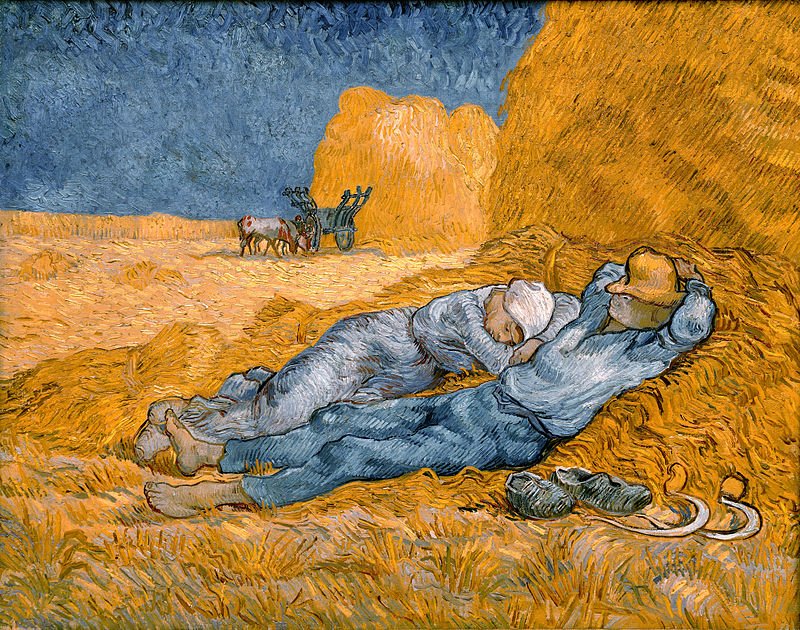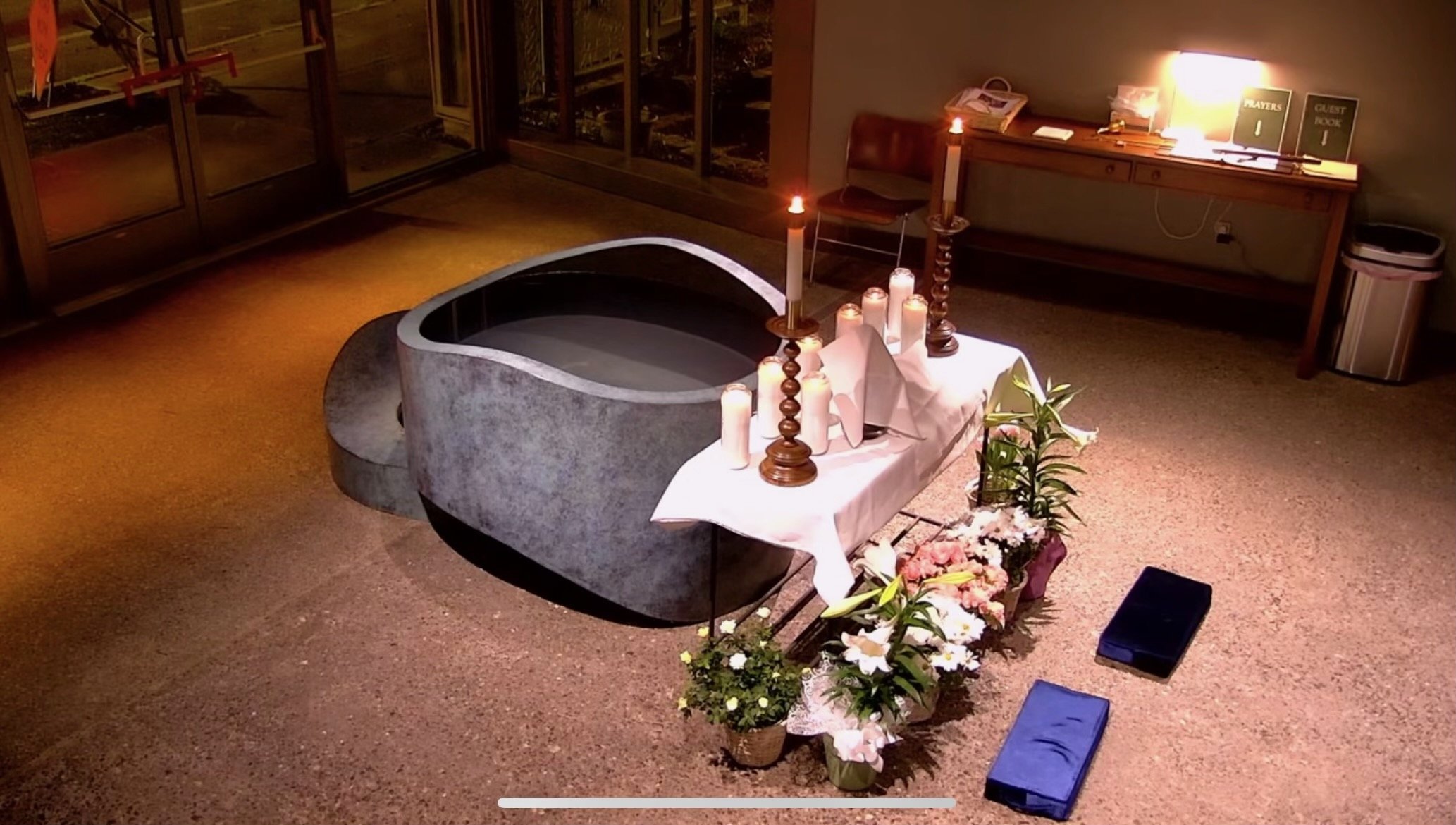Preached on the Seventh Sunday after Pentecost, July 7, 2024, at St. Paul’s Episcopal Church, Seattle, Washington by The Reverend Phillip Lienau.
Shake off the dust, by Mark A Hewitt
We hear in today’s Gospel a wonderful celebration of the new. Jesus sends out the disciples to new ministry — to new places, to meet new people, to call to repentance, to cast out demons, and to heal. This is Good News.
We hear this Good News in the midst of the new ourselves. I am a new priest, a new curate. I am new to you, and you are new to me. We gather in the midst of new construction. Blowing through this place is a blessed wind of renewal, and I cannot help but be inspired about the time we share, growing together in discipleship. How might we, with God’s help, join in the ministries of calling to repentance, casting out demons, and healing?
But there will surely come a day, my friends, when I am no longer new to you, and you are not new to me, and the shininess of the new construction may seem to subtly fade, if only through growing familiarity. This is not a bad thing. Familiarity can go hand in hand with trust, with steady knowledge of ourselves and each other, with a mature faith that is lived out over lifetimes.
In a way, for all that is new here, today, we are also held up by what is known, and known well. I am new priest, but priesthood is not new. As a congregation, you are new to me, but the practice of Christians to gather in congregations is not new. Even this building, although young compared to Christianity, and presently being renewed, carries on a long tradition of being the sort of place to which people can bring their most deeply felt hopes, and fears, and dreams.
But this place is also dangerous. The new can bring the unexpected. That might sometimes feel dangerous. But I think the greatest danger is not from the new, the unknown, the unexpected. No, I think the greatest danger, even in a place full of blessing such as this, is the known. As soon as we think we know everything we need to know about ourselves and each other, we are in danger. I interpret the first part of today’s Gospel to be about this, the danger of the known.
I invite you to join me in imagining that this place is Jesus’ hometown. Lower Queen Anne is Jesus’ home neighborhood, and St. Paul’s is his home church. As a community, we’ve known Jesus all his life. His mother, Mary, is here. His siblings are here. We are all familiar with his carpentry. We all know Jesus. A regular person, one of us. Just like one of us.
Notice how the things the people in Jesus’ hometown say about him are positive. They say, “What is this wisdom that has been given to him? What deeds of power are being done by his hands!” They don’t say, why does this person claim to be wise, or claim to be capable of deeds of power. No, they acclaim and affirm him. They see his wisdom, and they admit his power. Good. Would we not also, given the chance affirm the wisdom and power of Jesus, our hometown hero?
Yet I invite us to consider the possibility that we might not be as affirming as we would like to think. I do not say this lightly. Oh, how I wish that we could remain safely in the good, and the known. But we cannot. The reason is found in the wound in this Gospel, a wound so close to home as to pierce the heart of all who hear it.
The wound is this. The people in Jesus’ hometown took offense at him precisely because they thought they knew him, and knew him well, as a known good. And the fact that he was a known good is what made him safe. It appears that the people who knew him would have rathered he remain as he had been, than to change, even if him changing brought to that town wisdom and power and healing. The people in Jesus’ hometown chose the lesser known thing over the greater unknown and unexpected thing. What they seem to have wanted is for everyone to have and know their place. Jesus is known as a carpenter, and is not meant to be known as a prophet, much less the Son of God.
Here at St. Paul’s I invite us to reflect on how much we have decided we know about each other. I would hope that we all see each other as blessings, as good companions in the Way. But are we willing to affirm each other as we change? What if, one day the Holy Spirit suddenly enabled someone among us to perform miraculous healing in our presence, in a way that is inconvertible and not to be explained away? Would we respond the way people did to the disciples who visited them, or would we respond the way the people in Jesus’ hometown did to him?
Of course I would like to think that we would respond as people did to the disciples. I hope that we would heed the call to repentance, accept the casting out of our demons, and, in our faith, be anointed with oil and cured of whatever ails us.
I believe that the key to us responding the way we wish we would, is in that first part of the ministry of the disciples: the call to repentance. Now, I am aware that in the Episcopal Church in the early 21st century, paying much attention to repentance outside of Lent and Advent may not be popular. But to that I must refer to this Gospel, and the wound at the heart of it, and declare that I think to heal this wound, we must act decisively, boldly, bravely.
It is no coincidence that healing and repentance are bound up together in this Gospel, and that repentance is the necessary groundwork before the healing. It is significant in the description of Jesus in his hometown that repentance is not mentioned.
Repentance for misdeeds — we are familiar with that. But to address the wound in this Gospel, a more subtle repentance is needed. This is repentance for the folly for thinking we already know everything we need to know about ourselves and each other.
The people in Jesus’ hometown thought they knew everything about him, and their pride in their own knowledge closed their hearts to the healing Jesus offered. I also suggest some of those people probably thought they knew everything about themselves. Prideful self-knowledge can take two forms here: we can think we know ourselves well enough to know that we do not need healing. Turns out, that’s false.
The other form is more insidious, the prideful supposed self-knowledge that we are not worthy of healing. How often we poor human beings convince ourselves, perhaps unconsciously, that we are not worthy of God’s healing love!
If this were Jesus’ hometown, and he showed up today offering wisdom and healing, can we honestly say that we may not secretly fear that he is here to heal other people, known good people around us, but that we ourselves are surely too far gone to heal? It is my belief that this secret fear is at the center of the wound in this Gospel, and is very likely here, today. Because while we are in the midst of the new, we are also in the midst of the known. We have the privilege of living at once in both parts of today’s Gospel.
So, repentance. We are called to repent of our prideful belief that we know everything we need to know, and to instead prepare ourselves to be surprised by the Holy Spirit at work among us. We are called to repent of the prideful belief that we don’t need any healing. We are called to repent of the prideful belief that we aren’t worthy of healing.
The Good News is that we have repentance, and renewal, available to us. First, in Baptism. Baptism is about many things, including preparing us to be changed by the Holy Spirit. Baptism in the Episcopal Church is well expressed when it is a communal rite, so that the whole community can affirm their readiness to witness the newly baptized person changing over the course of their discipleship.
We also have the Eucharist. The Eucharist is, like Baptism, about many things, but in this case I am interested in the way in which we come together in communion at once as we are and as we may be in the future. We gather as ourselves, with all our beauty and all our brokenness. We gather in hope, and in fear. But we gather to be transformed, to be remade. We gather to offer ourselves in thanks and praise, so that God who loves us can make of us the new Creation, in, with, and through Christ.
Baptism and Eucharist together ask of us something extraordinary. We are to travel this Way of Christian discipleship together, getting to know each other, hopefully recognizing in each other and in ourselves the known, the good. But at the same time we are to hold such knowledge lightly, in humility, readying ourselves to discover that along the way God has been remaking us into something more wondrous than we could imagine.
And if this Gospel teaches us anything about how God works through the new, is that it is likely to be in unexpected ways, ways that may challenge how we thought we knew ourselves and each other.
For everything new in the world is part of God’s Creation.
And all our knowledge has its source in God, and has its end in God.
I am excited about our ministry, and our discipleship together. I hope you are too. I pray that we, in humility, remember that the source of our excitement is properly in God. I pray that we remember that each and every one of us is beloved, could use some healing, and is worthy of being healed. And lastly, I pray that we be ready to welcome the renewed versions of ourselves and each other, however the Holy Spirit sees fit to reveal these wondrous things to us. I believe that if we faithfully answer the call to repentance and accept God’s healing love, we will be amazed at the deeds of power that Jesus is doing here in his hometown.





















